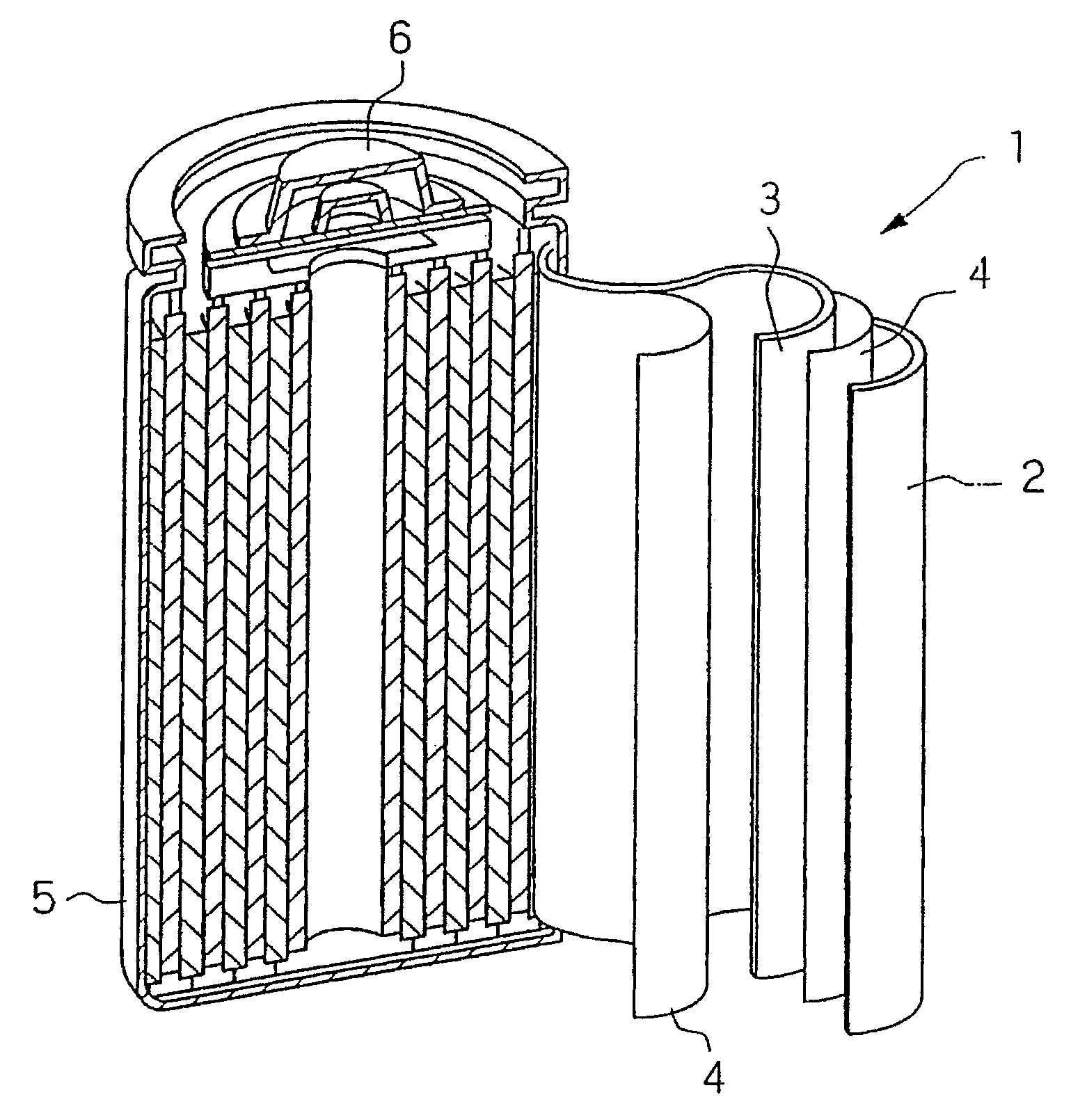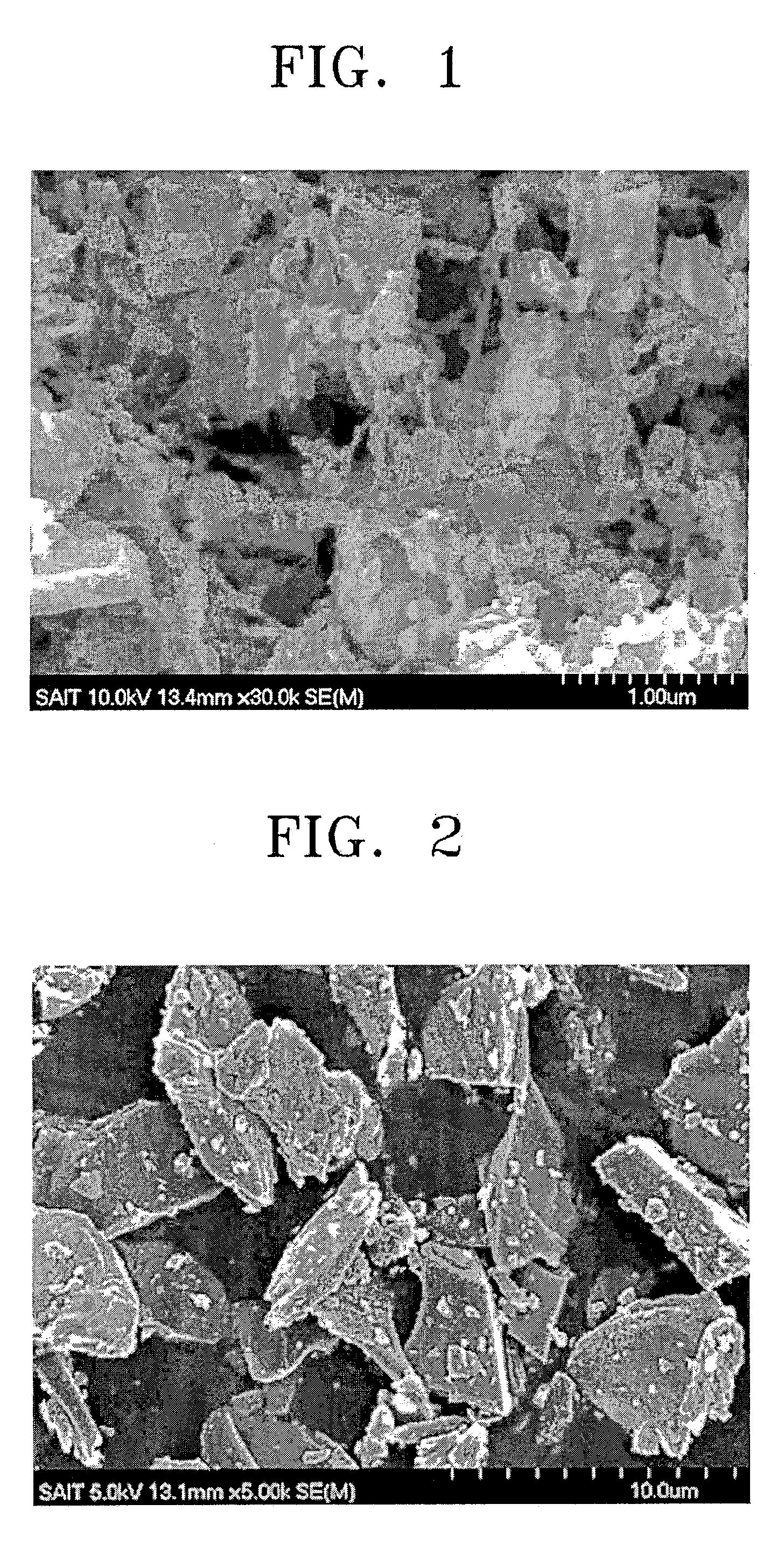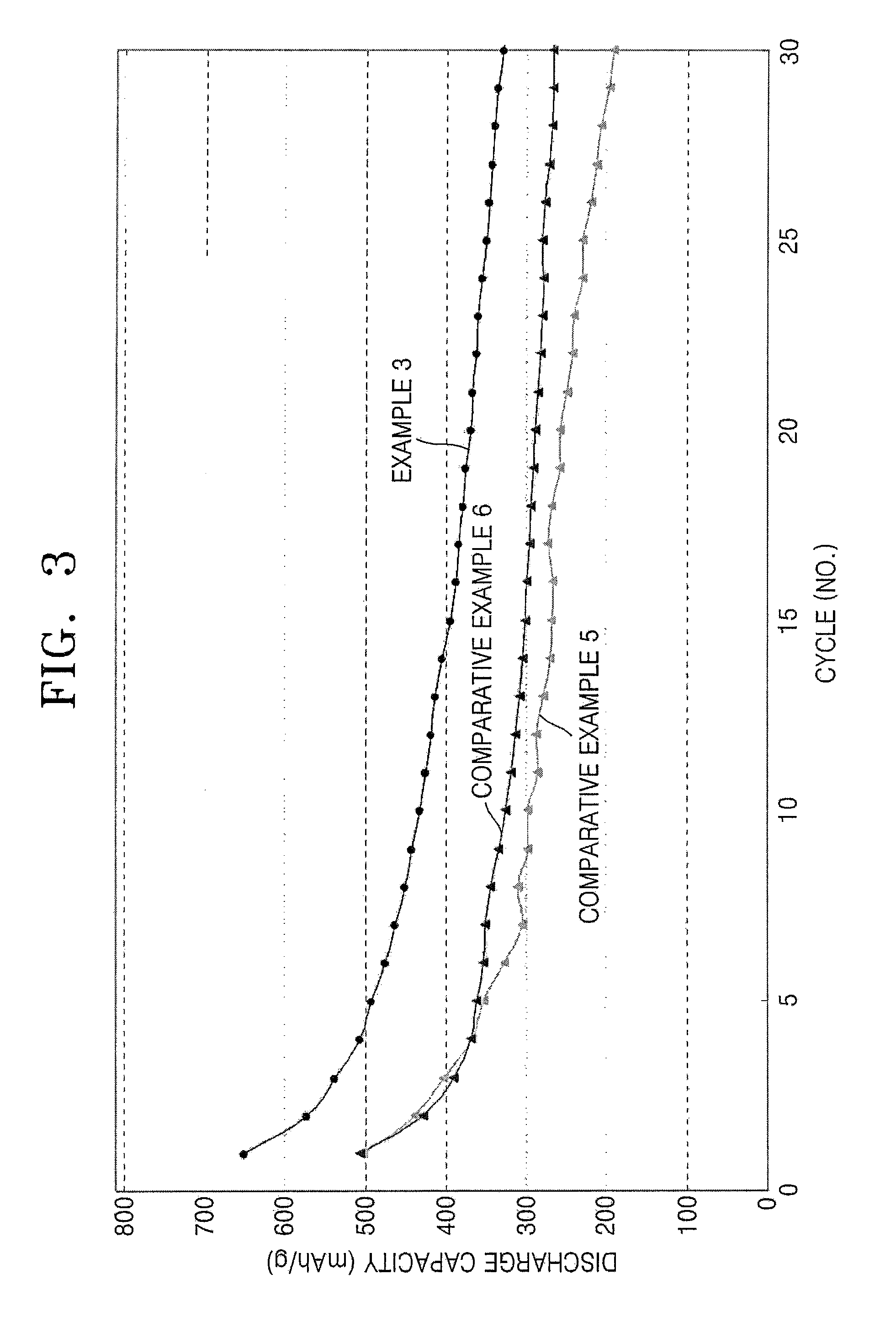Anode active material, method of preparing the same, and anode and lithium battery containing the material
a technology of anode active materials and anode active materials, which is applied in the manufacture of negative electrodes, cell components, electrode manufacturing processes, etc., can solve the problems of reducing the charge/discharge efficiency of the battery, oxidation and reduction reactions, and the commercialization of metallic lithium anode batteries, etc., to achieve excellent initial charge/discharge efficiency and enhance charge/discharge capacity.
- Summary
- Abstract
- Description
- Claims
- Application Information
AI Technical Summary
Benefits of technology
Problems solved by technology
Method used
Image
Examples
example 1
[0070]1 g of silicon metal powder having an average diameter of less than 43 μm, 1 g of polyvinyl alcohol (PVA) powder with a molecular weight of 500, and 3 g of oxalic acid were mixed to form a mixture. The mixture was pulverized by high energy mechanical milling using a SPEX CertiPrep 8000M mill. The pulverized mixture was heated under an argon atmosphere to 800° C. for 10 hours to completely carbonize the PVA. Then, the carbonized product was pulverized in a mortar to prepare an anode active material.
example 2
[0073]1 g of the anode active material powder prepared in Example 1, 8.6 g of graphite powder with an average diameter of 10 μm, 2 g of 10 wt % styrene butadiene rubber (SBR), and 0.2 g of carboxymethyl cellulose (CMC) were mixed, and 20 mL of distilled water was added to the mixture. Then, the reaction mixture was stirred for 30 minutes using a mechanical stirrer to prepare a slurry.
[0074]The slurry was coated to a thickness of about 200 μm on a copper (Cu) current collector with a doctor blade and then dried. The resultant structure was again dried in a vacuum at 110° C. to manufacture an anode plate.
example 3
[0077]A 2015 standard coin cell was manufactured using the anode plate manufactured in Example 2, a counter electrode made of lithium metal, a PTFE separator, and an electrolyte solution including 1M LiPF6 dissolved in a mixed solvent of ethylene carbonate (EC) and diethyl carbonate (DEC) in a volume ratio of 3:7.
PUM
| Property | Measurement | Unit |
|---|---|---|
| temperature | aaaaa | aaaaa |
| temperature | aaaaa | aaaaa |
| temperature | aaaaa | aaaaa |
Abstract
Description
Claims
Application Information
 Login to View More
Login to View More - R&D
- Intellectual Property
- Life Sciences
- Materials
- Tech Scout
- Unparalleled Data Quality
- Higher Quality Content
- 60% Fewer Hallucinations
Browse by: Latest US Patents, China's latest patents, Technical Efficacy Thesaurus, Application Domain, Technology Topic, Popular Technical Reports.
© 2025 PatSnap. All rights reserved.Legal|Privacy policy|Modern Slavery Act Transparency Statement|Sitemap|About US| Contact US: help@patsnap.com



